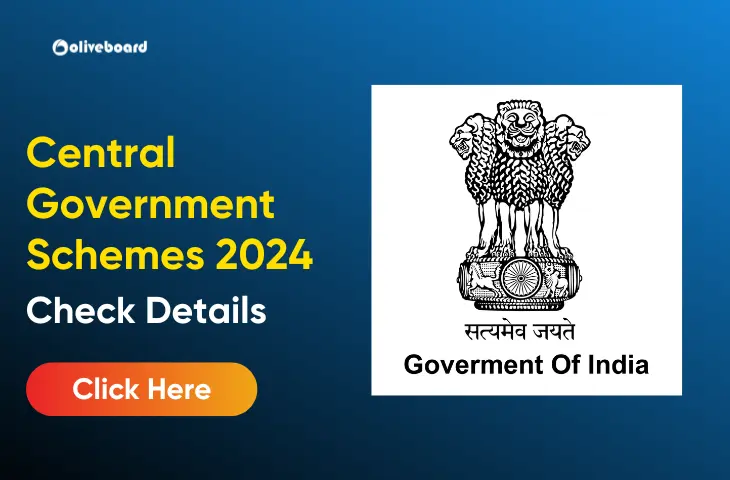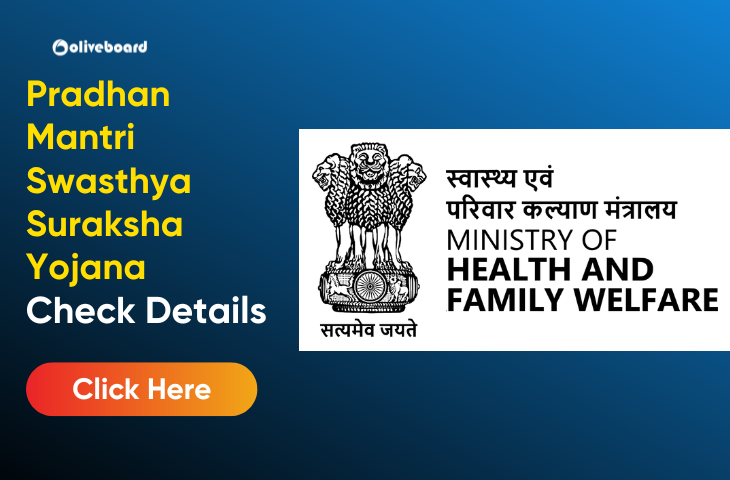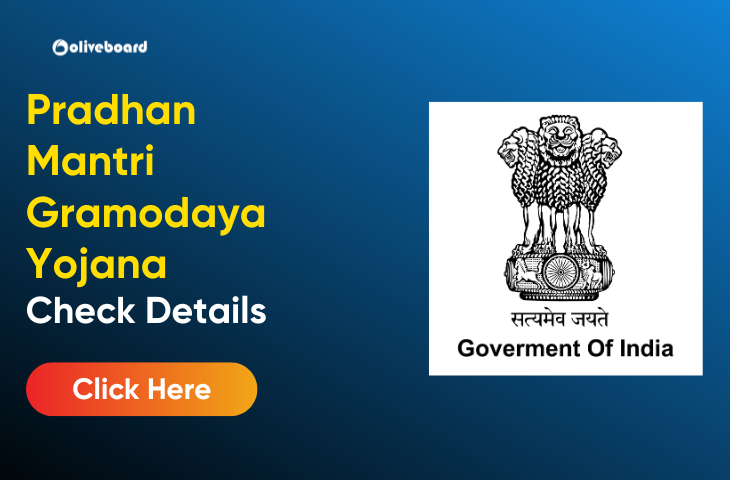Pradhan Mantri Fasal Bima Yojana (PMFBY)
India is mainly agricultural, with many farmers relying on it. Prime Minister Narendra Modi launched the Pradhan Mantri Fasal Bima Yojana (PMFBY) on January 13, 2016. This plan aims to reduce insurance costs for farmers who borrow money for farming and protect them from bad weather.
Claims under Pradhan Mantri Fasal Bima Yojana (PMFBY) are settled quickly and easily. Every state in India has adopted this scheme with the help of their governments. It is managed by the Ministry of Agriculture and Farmers Welfare, Government of India.
Overview Table Of Pradhan Mantri Fasal Bima Yojana
| Aspects | Details |
| Scheme Name | Pradhan Mantri Fasal Bima Yojana (PMFBY) |
| Launch Date | January 13, 2016 |
| Objective | Provide crop insurance to farmers at reduced costs, protect them from adverse weather, and ensure quick settlement of claims. |
| Management | Ministry of Agriculture and Farmers Welfare, Government of India |
| Risks Covered | Yield Losses, Prevented Sowing, Post-Harvest Losses, Localized Calamities |
| Premium Rates | – Kharif crops: 2% of Sum Insured (SI) or Actuarial rate, whichever is less – Rabi crops: 1.5% of SI or Actuarial rate, whichever is less – Annual Commercial/Horticultural crops: 5% of SI or Actuarial rate, whichever is less |
| Eligibility | – Must be a cultivator or sharecropper on the insured land. – Possess a valid land ownership certificate or land tenancy agreement. – Apply for insurance coverage within two weeks of the sowing season. – Should not have received compensation for the same crop loss from any other source. – Provide a valid bank account and identity proof during enrollment. – Eligible if cultivating notified crops in the designated area during the season. |
| Achievements | Largest crop insurance scheme in independent India, over 29.19 crore farmer applications since 2016, claims worth more than Rs 95,000 crore disbursed, lowest premiums for all farmers. |
| Documents Required | Bank account number Aadhaar card Khasra number of land Agreement photocopy Voter ID Driving license Passport-size photograph of the farmer |
प्रधानमंत्री फसल बीमा योजना
“प्रधानमंत्री फसल बीमा योजना” भारत सरकार द्वारा शुरू की गई एक योजना है जो किसानों को कृषि उत्पादों की बीमा की सुविधा प्रदान करती है। यह योजना उन किसानों के हित में है जो किसानी के लिए ऋण लेते हैं और अनुकूल वातावरण के खिलाफ सुरक्षित रहना चाहते हैं। इसके तहत, बीमा दरों को कम करने का प्रयास किया जाता है और दावों को त्वरित और सरल तरीके से निपटाया जाता है। यह योजना सभी भारतीय राज्यों में लागू है और कृषि और किसान कल्याण मंत्रालय, भारत सरकार के अधीन प्रबंधित की जाती है।
What is Pradhan Mantri Fasal Bima Scheme?
India relies heavily on its farming population, which is predominantly agrarian. On January 13, 2016, Prime Minister Shri Narendra Modi introduced the Pradhan Mantri Fasal Bima Scheme.
This scheme, launched by the Ministry of Agriculture & Farmers Welfare, New Delhi, starting from the Kharif 2016 season, aimed to alleviate the financial burden of insurance premiums on farmers who borrow loans for cultivation.
The National Insurance Company joined the PMFBY from the Rabi 2016 season onwards, covering 8 States and 2 Union Territories over the past 5 seasons, benefiting 70,27,637 farmers.
Implementation Agency
The implementation of the Scheme will involve a multi-agency framework, with selected insurance companies operating under the supervision of the Department of Agriculture, Cooperation & Farmers Welfare (DAC&FW), Ministry of Agriculture & Farmers Welfare (MoA&FW), Government of India (GOI), and the respective State authorities.
This coordination will also include various other entities such as financial institutions like Commercial Banks, Co-operative Banks, Regional Rural Banks, and their regulatory bodies, as well as government departments including Agriculture, Co-operation, Horticulture, Statistics, Revenue, Information/Science & Technology, and Panchayati Raj.
Management and Monitoring of the scheme
The existing State Level Co-ordination Committee on Crop Insurance (SLCCCI) in each state will oversee the program’s implementation within their jurisdiction.
A National Level Monitoring Committee (NLMC), chaired by the Joint Secretary (Credit) of the Department of Agriculture Cooperation and Farmers Welfare (DAC & FW), will supervise the scheme at the national level.
To ensure effective implementation and maximum benefits to farmers, the following monitoring measures are proposed for each crop season:
- Nodal Banks intermediaries will compile a list of insured farmers (both loanee and non-loanee) with necessary details and share it electronically for reconciliation, once the E-platform is operational.
- Financial institutions/banks should transfer the claims amount received from insurance companies to beneficiaries’ accounts within a week, done directly online by the insurance company.
- The list of beneficiaries (bank-wise and insured area-wise) will be uploaded on the crop insurance portal and concerned insurance companies’ websites.
- Regional Offices/Local level Offices of Insurance Companies will verify about 5% of beneficiaries and provide feedback to District Level Monitoring Committees (DLMC) and State Government/State Level Coordination Committee on Crop Insurance (SLCCCI).
- DLMCs will cross-verify at least 10% of beneficiaries verified by insurance companies and send feedback to the State Government.
- 1 to 2% of beneficiaries will be verified by the Head Offices of insurance companies/Independent Agencies appointed by the Central Government/National Level Monitoring Committee, with necessary feedback sent to the Central Government.
Additionally, District Level Monitoring Committees (DLMC), already overseeing the implementation and monitoring of existing crop insurance schemes, will be responsible for managing the Scheme effectively.
Risks Covered Under PMFBY
- Yield Losses: The insurance covers various risks that lead to reduced crop yields, such as natural disasters like fire, lightning, storms (including hailstorms, cyclones, etc.), floods, drought, pests, and diseases.
- Prevented Sowing: If many insured farmers in an area can’t plant their crops due to bad weather, they can claim up to 25% of the insured amount.
- Post-Harvest Losses: For crops left in the field to dry after harvesting, the insurance covers losses caused by specific perils like cyclones and unseasonal rains for up to 14 days.
- Localized Calamities: Damage caused by certain localized risks like hailstorms, landslides, and floods affecting individual farms is covered.
Highlights Of The Scheme
- Farmers pay a low, uniform premium of 2% for Kharif crops, 1.5% for Rabi crops, and 5% for annual commercial and horticultural crops.
- The government covers the balance of the premium to ensure farmers receive full insured amounts for crop loss due to natural calamities, with no upper limit on subsidy.
- The removal of premium rate caps ensures farmers receive full insured amounts without reductions.
- Technology like smartphones, drones, and GPS is used to streamline data collection for quicker claim payments.
- The Agriculture Insurance Company of India (AIC) administers the insurance plan.
- PMFBY replaces NAIS and MNAIS, exempting it from service tax.
Pradhan Mantri Fasal Bima Yojana Objectives
The Pradhan Mantri Fasal Bima Yojana Objectives are provided below:
- Help farmers financially when they face crop loss or damage from unexpected events
- Steady farmers’ income so they can keep farming
- Encourage farmers to use new farming methods
- Ensure farmers get the loans they need for farming, which helps with food security, crop variety, and makes farming more competitive, while also protecting farmers from risks.
Pradhan Mantri Fasal Bima Yojana Benefits
The Pradhan Mantri Fasal Bima Scheme offers the following benefits:
- Comprehensive insurance coverage for both Kharif and Rabi crops.
- Additional coverage for specific circumstances.
- Optional for farmers, whether they have loans or not.
- Provides stability in farmers’ income, allowing them to continue farming.
Premium Rates:
| Season | Crops | Maximum Insurance charges payable by the farmer (% of Sum Insured) |
| Kharif | Food & Oilseeds crops (all cereals, millets, & oilseeds, pulses) | 2.0% of SI or Actuarial rate, whichever is less |
| Rabi | Food & Oilseeds crops (all cereals, millets, & oilseeds, pulses) | 1.5% of SI or Actuarial rate, whichever is less |
| Kharif & Rabi | Annual Commercial / Annual Horticultural crops | 5% of SI or Actuarial rate, whichever is less |
Pradhan Mantri Fasal Bima Yojana Achievements
- The largest crop insurance scheme in the history of independent India and globally, ranking third in terms of premium size.
- Since 2016, over 29.19 crore farmer applications have insured their crops under the PMFBY.
- Farmers have received claims worth more than Rs 95,000 crore since the scheme’s launch in 2016, despite paying a total premium of Rs 17,000 crore.
- All farmers in India benefit from the lowest premiums: 2% for Kharif Food & Oilseeds crops, 1.5% for Rabi Food & Oilseeds crops, and 5% for Annual Commercial/Horticultural Crops.
Pradhan Mantri Fasal Bima Yojana Eligibility
- The farmer must be either a cultivator or a sharecropper on the insured land.
- Farmers must possess a valid and authenticated land ownership certificate or a valid land tenancy agreement.
- Insurance coverage must be applied for within the prescribed time frame, typically within 2 weeks of the start of the sowing season.
- Farmers must not have received compensation for the same crop loss from any other source.
- A valid bank account and identity proof must be provided by the farmer at the time of enrollment.
- All farmers cultivating notified crops in a notified area during the season, and who have an insurable interest in the crop, are eligible.
Exclusions:
The scheme does not cover losses caused by war, nuclear risks, riots, deliberate damage, theft, acts of hostility, damage by animals, post-harvest losses when crops are bundled before threshing, and other avoidable risks.
Pradhan Mantri Fasal Bima Yojana Apply Online
You can follow the below steps for Pradhan Mantri Fasal Bima Yojana Apply Online:
- Visit the official portal.
- Click on “Farmer Corner.”
- If you don’t have an account, click on “Guest Farmer” and fill in all details accurately.
- Submit the form to create an account.
- Complete the insurance scheme form and provide all necessary details.
Pradhan Mantri Fasal Bima Yojana Documents Required
- Bank account number.
- Aadhaar card.
- Khasra number of land.
- Agreement photocopy.
- Ration card.Voter ID.
- Driving license.
- Passport-size photograph of the farmer.
How to Intimate The Claim?
- If there’s crop loss, farmers need to file a claim with the insurance company within the given time frame, usually within 72 hours of the loss.
- Access the list of relevant person/company details on the portal and select “Report Crop Loss,” or download the app to report the crop loss.
- The claim should include supporting documents like photos of the damaged crop and a report from the village-level committee (VLC) or the agriculture department.
Conclusion
Pradhan Mantri Fasal Bima Yojana (PMFBY) was launched on January 13, 2016, by Prime Minister Narendra Modi to support India’s agriculture sector. It aims to reduce the financial burden of insurance premiums on farmers and protect them from adverse weather conditions. PMFBY has been efficiently implemented across all states under the Ministry of Agriculture and Farmers Welfare, Government of India.
Frequently Asked Questions
Ans: PMFBY is a crop insurance scheme launched by Prime Minister Narendra Modi on January 13, 2016, aiming to reduce insurance costs for farmers and protect them from adverse weather conditions.
Ans: PMFBY covers yield losses, prevented sowing, post-harvest losses, and localized calamities such as hailstorms, landslides, and floods.
Ans: Premium rates vary based on the crop and season. For Kharif crops, it’s 2% of the sum insured (SI) or the Actuarial rate, whichever is less. For Rabi crops, it’s 1.5% of SI or the Actuarial rate, and for annual commercial/horticultural crops, it’s 5% of SI or the Actuarial rate, whichever is less.
Ans: PMFBY is the largest crop insurance scheme in independent India, with over 29.19 crore farmer applications since 2016. Claims worth more than Rs 95,000 crore have been disbursed, benefiting farmers across the country with the lowest premiums.
- GA Questions Asked In SBI PO Mains 2025, 5th May Analysis

- Pradhan Mantri Suraksha Bima Yojana 2024 Overview & Benefits

- Central Government Schemes 2024, List of Schemes under Every Ministries

- Pradhan Mantri Swasthya Suraksha Yojana (PMSSY) 2024

- Pradhan Mantri Gramodaya Yojana 2024 Features & Benefits

- Pradhan Mantri Van Dhan Yojana 2024, Features, Components & Stages


